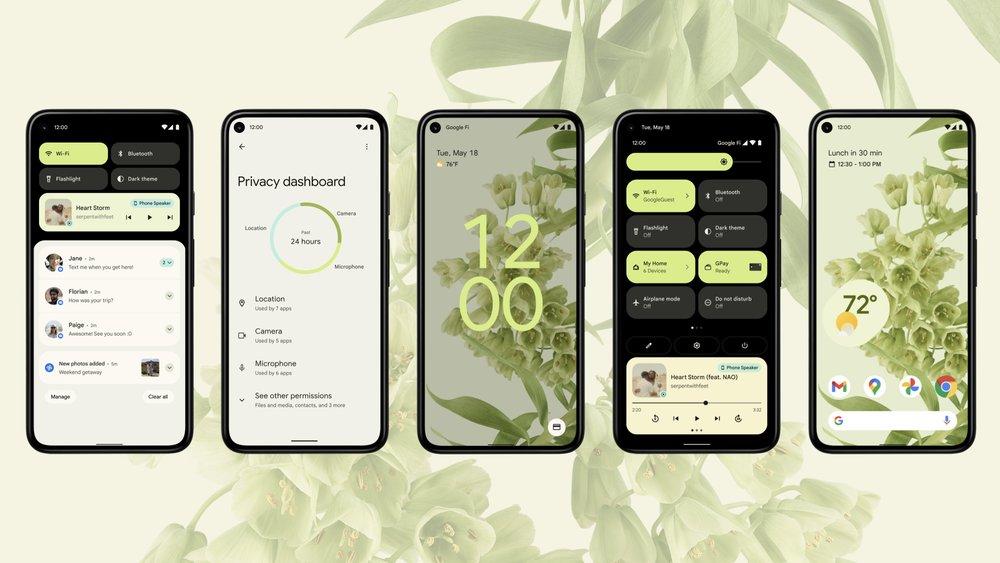Android in a nutshell
Android is based on the Linux kernel, an operating system designed primarily for PCs. In the world of smartphones, Android is the basis for all other interfaces from phone manufacturers – except Apple, which has its own OS. This basic version is called the stock version. It is also only available on Pixels, Google's own models, which also gain exclusive options. Android isn't just available on phones. A tablet version also exists – even if it doesn't really differ from what we can have on smartphones. Google has also diversified over the years by offering its operating system on connected watches (Wear OS, developed jointly with Samsung), Android Auto for cars and Android TV for smart TVs. For the case of Android 12, a 12L version (for "Large") is expected in 2022 for tablets and folding smartphones.
The OS being developed by Google, Android-based smartphones include by default the applications created by the Mountain View company, such as Gmail, Maps, the Play Store, Photos or Chrome. Huawei is the only manufacturer to no longer have access to Google's APIs (Application Programming Interface) since it was blacklisted by Donald Trump's administration in May 2019. It must therefore deal without Google services (supermarkets, or Google Mobile Services).

Three versions of Android coexist. The first is the one we encounter on the vast majority of smartphones on the market. The second is called Android One. This is a bloatware-free variant and promises 2 years of software updates and 3 years of security updates. The third, Android Go is intended for smartphones equipped with 2 GB (or less) of RAM. It is neither more nor less than a light version of the OS. It is especially present on the entry-level models. There is also a classic Android derivative aimed at businesses. Android Enterprise allows you to manage your fleet of smartphones and has additional security components; phones that usually sport an "Android Enterprise Recommended" badge. This is particularly the case at Motorola.
